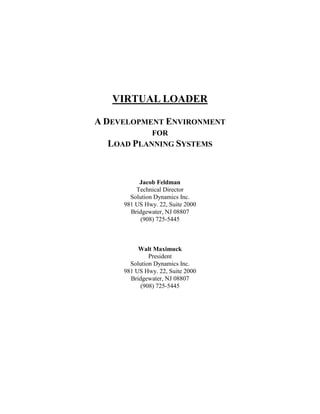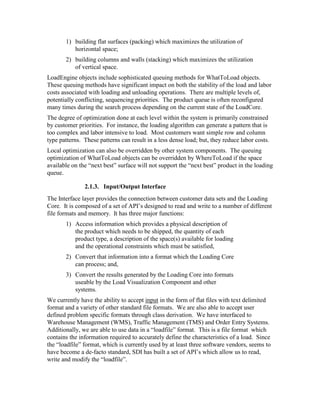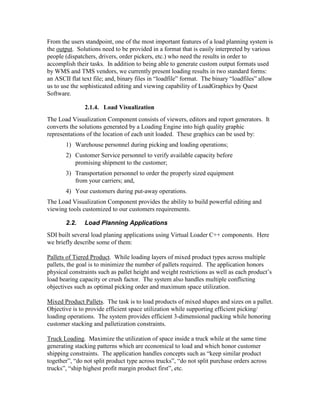This document describes Virtual Loader, a development environment created by Solution Dynamics Inc. using ILOG Solver. Virtual Loader provides a set of C++ components for building load planning applications. It allows customers to quickly add business requirements and satisfy conflicting objectives. Virtual Loader applications include pallet loading of tiered products, mixed product pallets, and truck loading to maximize space utilization.







